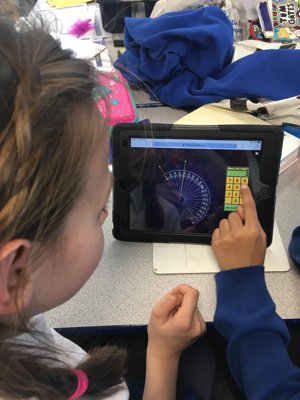Angles

Today we had a taster of our maths topic for after half term: angles.
We recapped everything we had learnt in year four about the different names for different types of angles and after half term we will start using protractors to continue our learning. Today, we used the iPads to measure angles, learning how to place the protractor correctly and then how to read it.
Using a protractor is vital to succeeding in this topic and any practising at home will certainly help to improve our accuracy. Learning all of the tips and rules below should also help to accelerate progress in lessons.
How you can practise at home:
- Use the website we used in lesson: https://www.mathplayground.com/measuringangles.html
- Draw lots of random angles on a plain piece of paper.
- Label the angles as acute, right, obtuse, straight line or reflex.
- Use a protractor to measure each angle.
- Draw lots of random triangles and quadrilaterals on a plain piece of paper.
- Label the angles as acute, right, obtuse, straight line or reflex.
- Use a protractor to measure each angle within each shape.
- Use the tips and rules below to check your accuracy!
Tips and rules:
- An acute angle is 0-89 degrees.
- A right angle is 90 degrees.
- An obtuse angle in 91-179 degrees.
- A straight line is 180 degrees.
- A reflex angle is 181-360 degrees.
- Angles in a triangle add up to 180 degrees.
- Angles on a straight line add to 180 degrees.
- Angles in a quadrilateral add up to 360 degrees.
- Angles in a full turn add to 360 degrees.
Next half term we will be learning to measure, draw and estimate angles before moving on to working out missing angles in shapes, straight lines and full turns!
Category: Class of 2014
Tags: Class 5
